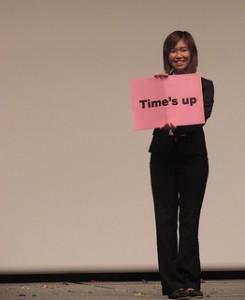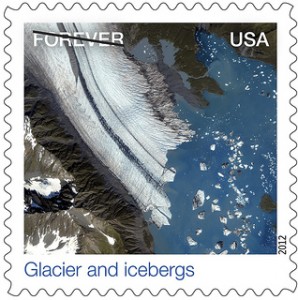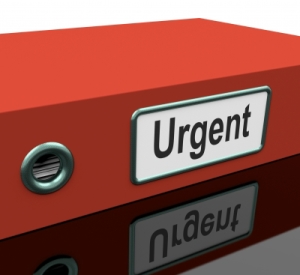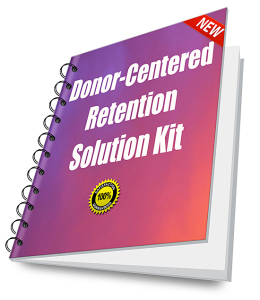
Did you get my gift? Why haven’t I heard from you yet? Is this how you run the rest of your business?
In my work with nonprofits, especially the small to medium-sized ones (but sometimes the big ones too!) there’s one question many of you struggle with:
Gosh dang it! How on earth do you develop a system that assures thank you’s really get out in 48 hours?
The good news is: You’re not alone. The even better news is: I’m going to give you the answer to your question.
HERE’S THE BIGGEST SECRET:
1. Everyone in Your Organization Must Buy in to the 48-Hour Rule
Donor etiquette is not wedding etiquette. You don’t have a year to send the thank you note. You have 48 hours. No kidding. This is perhaps the most important thing you can do to sustain donor relationships. But if anyone doesn’t take this seriously, it won’t happen. And if you can’t make this happen, you’re going to leave money on the table. You’re going to lose donors. Period.
So… how do you get everyone on board?
More Secrets:
2. Begin with the Research
There’s a reason it’s an industry best practice. In Donor-Centered Fundraising by Penelope Burk she says there are 3 simple steps to raising more money. She suggests that a simple acknowledgement can satisfy the first two needs immediately. The third can be addressed over time through a combination of communications with the donors. A donor needs to know:
- the gift was received…and you were pleased to get it.
- the gift was ‘set to work’ as intended.
- the project or program to which the gift was directed had the desired effect.
Show the research to your ‘Doubting Thomas’s’ so they can no longer argue with you. Donors do care about this. And if you’re really slow, it makes you appear inefficient. They’ll wonder — is this how you run the rest of your business?
For more proof to those who may get in the way, share this true story:
I remember a time when a donor asked that contributions in honor of his marriage be made to the organization for which I worked. He and his bride also named two other charities. Guess what? My organization sent a continual stream of prompt, personal acknowledgements. The other charities took weeks to send notifications. The donor let me know personally how much our acknowledgements meant, and we began a relationship. Ultimately, he joined the board, chaired the development committee and became a major supporter. All because of the thank you process!
3. Develop Written Acknowledgment Policies and Procedures
Assure you have the cross-departmental systems (often facilities, finance and development) in place to get the job done in a timely manner (here are two examples of policies from Association of Advancement Services Professionals and AFP: Developing Fundraising Policies and Procedures). This is another way to get everyone in your organization on board.
TIP: Think about the journey a donor’s gift takes from the minute it leaves their hands to getting deposited to your account. How quickly do you welcome the gift from its travels? Is everyone who should be involved in expediting the journey aware of their role to avoid delays, and do they own it? Do you have a “The show must go on” or a “Que Será Será” culture? Once I simply assigned staff to pick up and deliver mail on a daily basis. It sped up thank you letters by two whole days. Where are your hold-ups?
My 48 Hours: Donor Acknowledgement Solution Kit walks you step by step through these questions, and how the answers to them may help you to improve your donor service:
- Do you wait for the mail to arrive?
- Where does the mail go first?
- Where do checks go first?
- Where do credit card payments go first?
- Once the gift arrives in the development department, what steps are taken next?
- Who is assigned the job of gift acknowledgment?
- Once a computer-generated letter is produced, what happens next?
- Once the thank you is signed what happens next?
- Once the thank you is sealed what happens next?
Not having clarity on the answers to these questions can easily tack on several days to a week to your thank you letter’s journey.
4. Use Your ‘Thank You’ as Your Next Gift Strategy
Promptness is not just a nicety. The strongest indicator that someone will give to you again is recency. If it takes you several weeks — or more — to get your acknowledgement out the door, you’re missing out on your donor’s ‘most-likely-to-give’ period. Most first gifts are impulse purchases or first dates. If you have a good first date, what’s the first thing you do? Start thinking how to get the next one! You’ve got to think of your prompt acknowledgement as your ‘set up’ strategy for your next gift. The first 90 days are critical. If your donor doesn’t hear from you a few times in that time period, you may as well forget you ever met. Show them they really matter [read quote].
5. Beware of How You Treat ‘VIP’ Donors
Don’t let your higher level donor thank you letters take longer to get mailed because they sit on your director’s desk for a week waiting for a personal note. Figure out a system to avoid this and make it part of your policies and procedures. Something simple like putting these letters in a bright red folder and letting your E.D. and the executive assistant know this folder must be dealt with as a priority, every day, can make a difference.
6. An Online Receipt Does Not Absolve you From the Rule
Don’t let your online donors suffer just because they chose to give via your website. Make sure they get a prompt thank you that you’ve customized, and not just a canned emailed receipt. It should be personalized and align with the purpose for which they made their gift. These folks should also receive a mailed thank you letter, with all your inserts and personal notes, but you can take a little longer with this since they already know you’ve received and appreciated the gift.
Remember: your prompt, personal thank you builds a bridge to future support and deeper engagement. Do it well, and you’re on your way to future fundraising success.
Saying Thank You… and Beyond!
Want to really assure you keep and upgrade your donors — not just once, but year after year? Get my donor retention “bible” — The Donor Retention and Gratitude Playbook. The Playbook is broken into six separate Companion Guides so it’s easy for you to manage and not overwhelming. You’ll find plenty of practical tips, worksheets, exercises and checklists. You can get each volume separately, or get the “bargain bundle” at a generous discount. All Clairification products are guaranteed. In fact, if you don’t make more money than you spend on this, I’ll make a donation to your nonprofit!
Photos courtesy of Freedigitalphotos.net












Claire, thank you for your fine post! I never cease to be amazed by organizations that can effectively manage the hard things (like getting donors in the door), but mess up the easy stuff (like sending out thank-you letters promptly).
One suggestion I have for handling special cases such as VIP donors is to send them the regular thank-you letter. THEN, the executive director can also send a special, added thank you. This way, the development office is assured that the donor will receive a prompt thank you without sacrificing the personal touch that comes with the ED’s letter. (By the way, like you, I’ve observed that “special handling” usually means slower handling. Sheesh!)